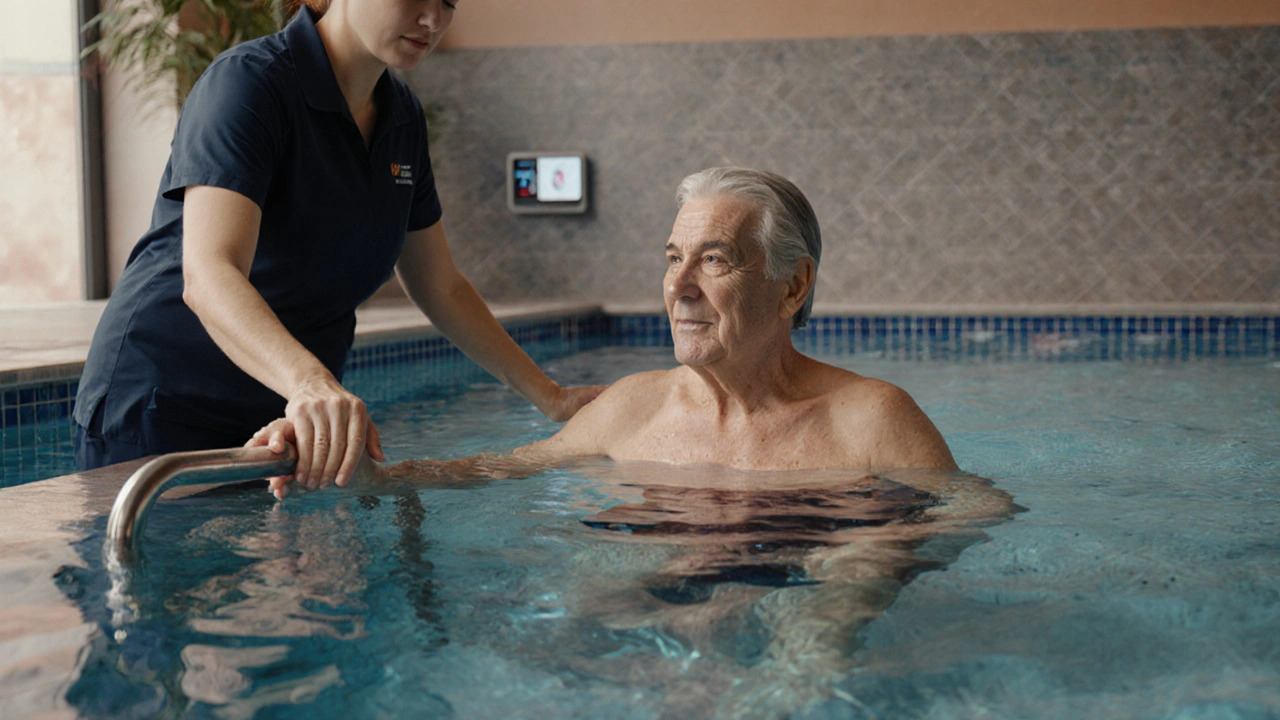Aquatic Therapy: How Water Works for Healing
When working with aquatic therapy, a rehabilitation method that uses water’s buoyancy, resistance, and temperature to aid recovery. Also known as hydrotherapy, it helps people improve mobility, cut pain, and speed up healing. In the broader world of rehabilitation, aquatic therapy is a specialized branch that complements traditional physical therapy. aquatic therapy encompasses hydrotherapy techniques, requires a warm pool and trained therapists, and enables patients to perform movements they couldn’t do on land. It also influences joint mobility because water pressure supports the body while still providing resistance, creating a safe environment for early-stage exercises.
Key Benefits and Practical Applications
One of the biggest draws is the way water reduces impact on joints. For arthritis sufferers, the buoyancy lets them move without stressing inflamed areas, while the gentle resistance builds strength. Stroke survivors benefit from water exercise because the supportive environment encourages balance work without fear of falling. Athletes recovering from a torn ligament can regain range of motion faster, thanks to the combination of warmth (which relaxes muscles) and hydrostatic pressure (which reduces swelling). The therapy also improves cardiovascular fitness; a simple 30‑minute water walk can raise heart rate similar to a treadmill session but with far less joint strain. These practical outcomes are why many clinics integrate aquatic therapy with standard physical therapy plans, creating a seamless continuum from land‑based drills to pool‑based recovery.
Choosing the right program starts with a clear assessment of goals. If pain relief is primary, a therapist may focus on gentle warm‑water sessions that emphasize relaxation and passive range of motion. For strength building, clinicians introduce water‑based resistance tools—like foam dumbbells or current‑producing jets—that mimic weight‑lifting while still protecting the spine and knees. Safety is paramount: therapists monitor water temperature (usually 30‑34°C) to prevent overheating and ensure the pool depth matches the patient’s abilities. As patients progress, the plan often shifts toward more dynamic water exercise, preparing them for a return to land activities. Below you’ll find a curated list of articles that dive deeper into specific conditions, techniques, and product recommendations, giving you a complete picture of how aquatic therapy can fit into your health journey.

Aquatic Therapy Benefits for Sclerosis Patients
Discover how aquatic therapy improves mobility, reduces spasticity, and boosts overall wellbeing for multiple sclerosis patients, with practical tips and a clear comparison to land-based rehab.
Read More